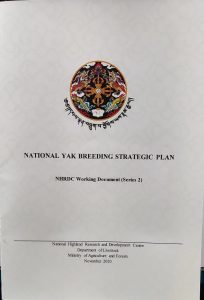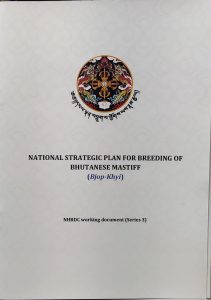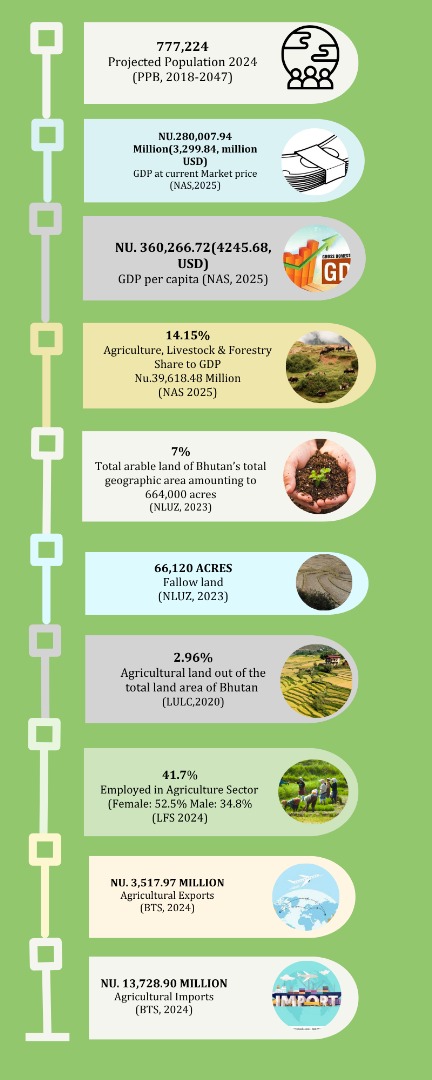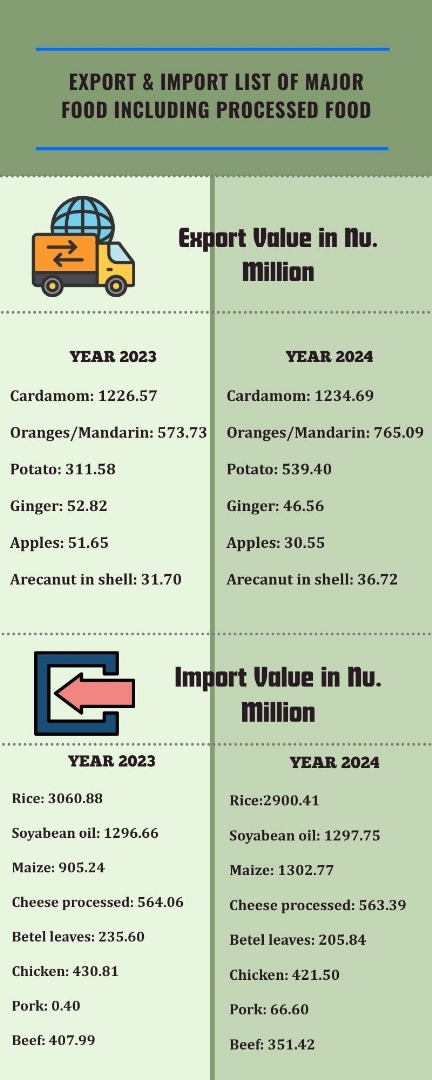06 July 2022: The Department of Livestock launches the following documents:
- Fishes of Eastern Bhutan
 A book titled “Fishes of Eastern Bhutan”, is developed by the National Research and Development Center for Riverine & Lake Fisheries (NRDCRLF), Haa. It represents the second edition in a two-volume series documenting the diversity of fishes in Bhutan and lists 115 fish species from Eastern Bhutan.
A book titled “Fishes of Eastern Bhutan”, is developed by the National Research and Development Center for Riverine & Lake Fisheries (NRDCRLF), Haa. It represents the second edition in a two-volume series documenting the diversity of fishes in Bhutan and lists 115 fish species from Eastern Bhutan.
The book is part of the study on Species Composition and Distribution of Fish in Aiechhu, Nyera-Amarichhu and the Manas river basin. The study was funded by the Bhutan Trust Fund for Environmental Conservation.
Bhutan’s rivers are home to one of the rich and unique aquatic biodiversity. As Bhutan’s water reserves, they get developed through numerous anthropogenic activities, the riverine ecosystem will inevitably be impacted. When this happens, it is necessary to mitigate these impacts in the form of management and conservation programs. A comprehensive fishery database in that regard is crucial for developing sound management plans. Thus, this book provides data and information needed to help guide management and mitigation strategies for aquatic biodiversity in Bhutan.
- National Yak Breeding Strategy Plan (NYBSP)
 Yak genetic improvement is one of the critical components to ensuring the sustainable livelihood of highland communities in the country. Yaks are not only the main source of livelihood for highland communities but also play a key role in maintaining rangeland ecosystems and preserving highland culture and traditions.
Yak genetic improvement is one of the critical components to ensuring the sustainable livelihood of highland communities in the country. Yaks are not only the main source of livelihood for highland communities but also play a key role in maintaining rangeland ecosystems and preserving highland culture and traditions.
There is concern on the deteriorating status of yak genetic resources in the country due to the lack of a strategic breeding plan coupled with difficulty in getting breeding bulls even though the population has remained largely the same. This document will provide timely and critical technical guidance for the improvement of yak genetic resources in the country to enhance productivity and the overall economy of yak-rearing highland communities.
- National Strategic Plan for Breeding of Bhutanese Mastiff (NSPBBM) – Bjop-Khyi
 The Bjop-Khyi is found in highland communities, mainly with yak herders, and plays a significant dual role of companion and guard dog, protecting highland domestic animals and properties against wild predators and human encroachers. The Bjop-Khyi is highly valued and cherished for its excellent guarding characteristics and has a strong presence in the highland landscape.
The Bjop-Khyi is found in highland communities, mainly with yak herders, and plays a significant dual role of companion and guard dog, protecting highland domestic animals and properties against wild predators and human encroachers. The Bjop-Khyi is highly valued and cherished for its excellent guarding characteristics and has a strong presence in the highland landscape.
However, there has been a decline in the population of Bjop-Khyi over the years due to uncontrolled mating with stray and feral dogs as well as decreasing trend of yak herding communities. The NSPBBM was launched to provide scientific and technical guidance in implementing mastiff dogs (Bjop-Khyi) breeding program in the country.
- Queen Breeding Rearing Handbook (QBRH)
![]()
Beekeeping unlike other livestock commodities can be easily taken up by poor and marginalized groups of people and is a potential income-generating activity for many farmers and groups in Bhutan that have now chosen to expand the number of improved hives to enhance honey production for better income. Currently, honey production is being carried out in Bumthang, Samtse, Sarpang, Tsirang, Dagana, Chukha, Haa, S/jongkhar, Trongsa, Zhemgang, Wangdu, Haa and Trashigang.
Subtropical districts of Bhutan viz. Tsirang, Sarpang, Dagana, Chukha, and Samtse are home to many local species of honeybees such as Apis dorsata, Apis laboriosa, Apis florea, Apis cerana and Trigona species from which honey is produced in various flowering seasons.
To sustain bee farming it is crucial to have one’s own queen breeding and rearing capacity in the field. For this reason, the National Highland Research and Development Center has come up with a handbook that will guide the beekeepers to breed their own queens and rear them on their own farms with minimum cost.
- Standard Operating Procedure (SOP) for Yak Semen Donor Bull Selection and Management.
 Although yak rearing is a highly remunerative and eco-friendly livestock farming system, yak development is still confronted with many challenges, one being low productivity due to genetic decline. The seasonal movement of herders from place to place and transboundary movement were critical in getting access to good quality yak breeds for maintaining a viable population and sustaining yak production. As a consequence, yak populations have suffered from in-breeding and reduced productivity. Therefore, genetic improvement needs to be initiated through the supply of good breeding bulls or making access to Artificial Insemination where possible.
Although yak rearing is a highly remunerative and eco-friendly livestock farming system, yak development is still confronted with many challenges, one being low productivity due to genetic decline. The seasonal movement of herders from place to place and transboundary movement were critical in getting access to good quality yak breeds for maintaining a viable population and sustaining yak production. As a consequence, yak populations have suffered from in-breeding and reduced productivity. Therefore, genetic improvement needs to be initiated through the supply of good breeding bulls or making access to Artificial Insemination where possible.
Cryopreservation of semen from quality yak donor bulls and the use of artificial insemination can be of the best tools for yak genetic improvement. Hence, the selection of quality bulls as a semen donor is crucial in the breeding procedure. This SOP will provide general guidelines for the selection of quality donors and their management for the production of quality Yak semen in the country.
The Honorable Secretary of the Ministry of Agriculture & Forests graced the launching of the books, at the DoL conference hall.
-DoL
![]()





